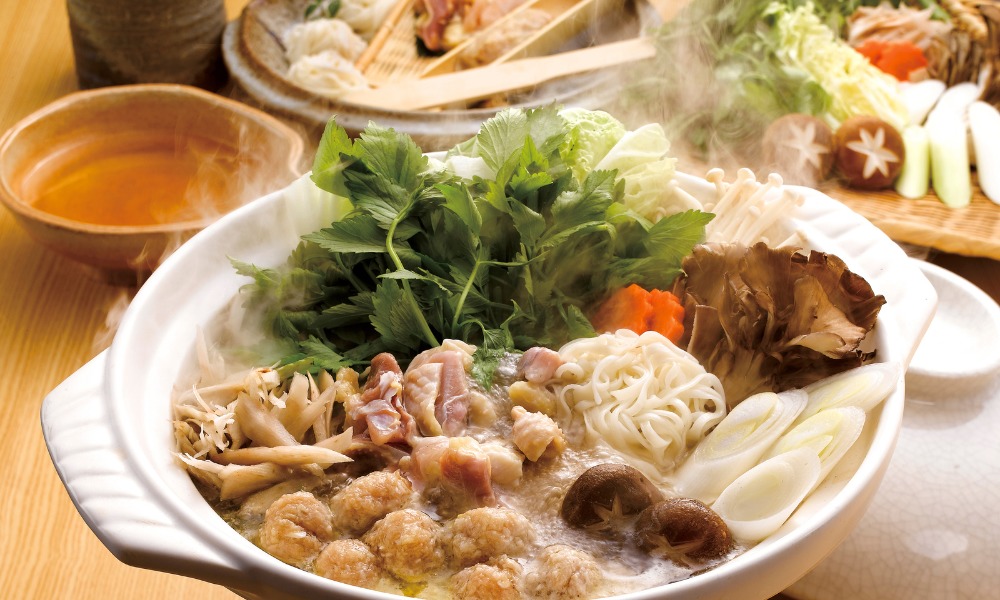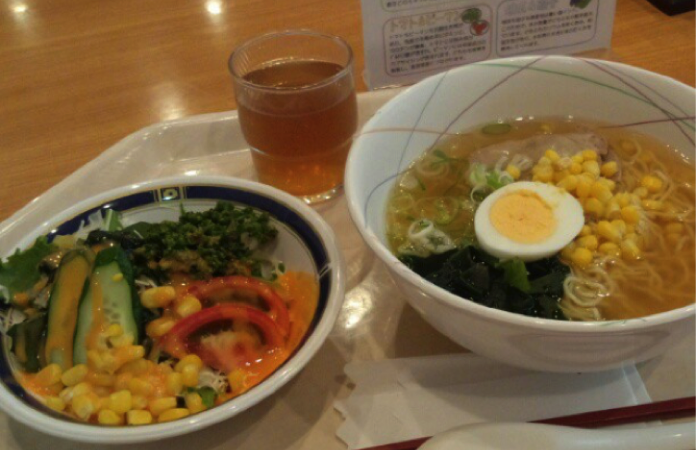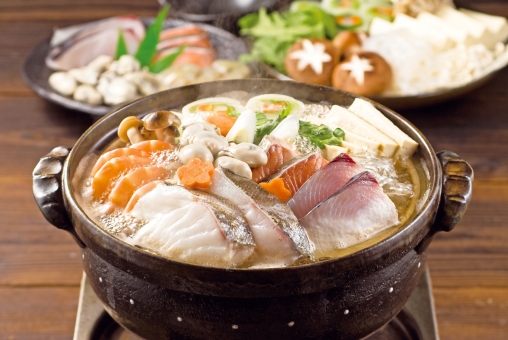Japanese cuisine is one of the most famous in the world; it has a long history and a particular pride in seasonal and local dishes and ingredients. So let’s take a look at late-winter foods.
Late Winter Seasonal Dishes to Try in Japan
Let’s dive into some of the late winter Japanese seasonal favourite dishes and ingredients to try this year if you haven’t yet.
Oden With Daikon and Lotus Root
Oden is a classic winter dish in Japan. It is a hot pot-style dish in which different ingredients are slowly simmered in a savoury dashi and soy sauce-based broth. You can find it sold in convenience stores and supermarkets as early as November, but it is during the coldest late January to late February, that eating oden really feels just like a warm hug.
There is a great variety of ingredients that can be made into oden, but some of the staples you cannot miss are savoury and soft eggs, fluffy fish cakes and tofu, crunchy and sweet lotus root and daikon, two particular favourites in late winter.
Komatsuna (Japanese Mustard Spinach)
Komatsuna is a type of spinach native to Japan in season between late December and March. It can be found in supermarkets all year round, but it is particularly sweet during the late winter season.
Zenzai and Oshiruko

Image credits: Canva
Zenzai and oshiruko are two winter’s favourite traditional Japanese desserts that consist of a hot, red bean soup usually served with chewy mochi (rice cakes) or candied chestnuts.
The difference between zenzai and oshiruko is mostly a matter of texture: while zenzai has a rough texture given from the boiled whole red beans, oshiruko has is smoother because the beans are boiled, then crushed and made into a silky watery paste.
Yudofu
As the name suggests, meaning “hot water” and “tofu”, yudofu is soft silken tofu simmered in water and konbu broth. Take out the tofu from the pot and add flavour by garnishing it with a mixture made with soy sauce, dashi and mirin, and top it with spring onion, and bonito flakes (but you can add what you like the most!) for the ultimate healthy home cooked meal.
Nabe
Nabe literally means “pot”, but in Japanese, it is used to describe a whole variety of delicious winter categories of soups and stews. Nabe is usually made by heating broth – there are many different varieties – on a stove and then adding in gradually different ingredients such as tofu, pork, cabbage, komatsuna, shirataki, noodles, kimchi, and even cheese or udon.
Nowadays, you can find so many different flavours of ready-to-eat broths at the supermarket that cooking nabe has become as easy as throwing a bunch of your favourite ingredients into your big pot.
The fun thing about nabe is the convivial part of the meal: the big “nabe” is put on a stove in the middle of the dining table, and everyone picks up the nicely cooked ingredients and broth directly from the pot and pours their small bowl.
Check out our guide on the famous winter hot pot dish to discover the most popular types and flavours.
Strawberries
Strawberry picking season in Japan starts around December and January and lasts until April or May, which is why strawberries are such a common fruit in late winter.
Japanese strawberries are big, juicy and sweet, and that is why it is worth eating them by themselves. But they can also be found in many delicious winter sweets and desserts, such as strawberry shortcake and strawberry daifuku.
Yuzu, Mikan and Iyokan

Image credits: Canva
The citrus family of fruits is a winter superfood, rich in vitamin c and antioxidants, and it is deeply loved during the colder months of January and February in Japan as well. In particular, the Japanese native yuzu, mikan and iyokan are the most popular fruit during the winter season. Similar to lemon, yuzu is used in soups and to enrich broths giving them a fresh touch, but the winter favourite among Japanese is yuzu tea. Yuzu tea is made by mixing finely sliced yuzu peel with honey or sugar, but nowadays, it can also be found in powder form. Just add some hot water and sip on the sweet but tangy drink that will warm your body and soul after a long cold day.
Mikan and iyokan are the two most popular citrus belonging to the orange family you can find in Japan during winter. Mikan is small and sweet, similar to mandarin, while iyokan is bigger, more bitter and has thicker skin.
Late Winter Seasonal Dishes and Foods to Try in Japan
Are you still struggling to find the perfect winter dish to comfort your body and soul during the coldest months of the year? Try some – or all – our suggested winter seasonal Japanese dishes and foods.
Related articles:






